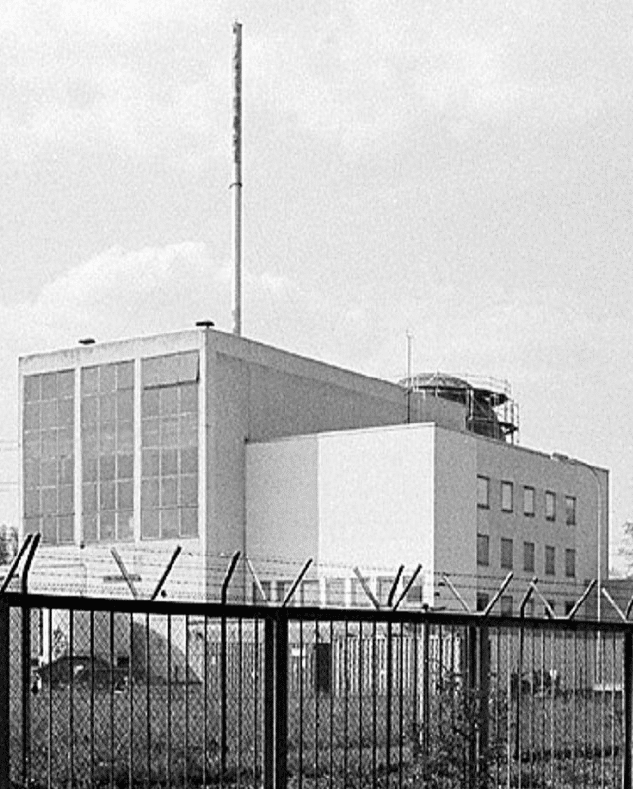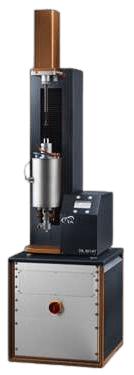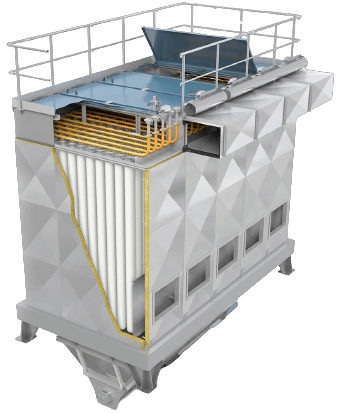The Complete Guide to Hot Gas Filtration
Over the past few years, the interest in hot gas filtration has been on a steady incline due to its application in a vast range of processes. This heightened focus is largely due to stringent emission regulations such as PM 10 and PM 2.5, increased monitoring of activities, including the requirement of Continuous Emission Monitoring Systems (CEMS), the prospects of process simplification or intensification, issues related to the provision and purification of wash waters for wet scrubbing, and the inception and deployment of novel processes like biomass gasification.
In sectors such as advanced power generation, chemical industry, oil refineries, incinerators, metal refining, and metal recycling, the imperative for hot gas cleaning springs from the necessity for improved process efficiency, intensified processes, superior product quality, and environmental compliance. Research has proven that by employing hot gas filtration, product quality, process efficiency, and economic viability can be enhanced. For instance, replacing wet scrubbing with hot gas filtration for fly ash removal boosts the efficiency of a coal gasification process by roughly 3%.
In numerous processes, high filtration temperatures are essential to prevent undesirable condensation or desublimation reactions, which lead to filter fouling and clogging, or product contamination. A case in point is the tar condensation in biomass gasification. Filtration of high-temperature process gases also offers the chance to use particle-free, high-temperature gas in linked or subsequent process stages. The economic and process-related benefits of hot gas filtration are especially clear in high-temperature processes involving the cyclical movement of substances or process gases and the recovery of products or costly materials like catalysts or noble metals. The use of hot gas filters enhances the energy efficiency and reaction performance by safeguarding downstream heat exchangers or catalyst units. Moreover, some processes can only be realized through the use of hot gas filters.
The major drawback of hot gas filtration lies in the higher initial outlay for the filter system due to the elevated material requirements and increased gas volume at higher temperatures. Additionally, the gas’s viscosity increases with temperature, resulting in a higher pressure drop. Nonetheless, in most scenarios, the benefits outweigh the drawbacks, and the higher initial costs are offset by a reduction in the overall process costs.
The first technical application of hot gas filtration dates to the incineration of low-level contaminated radioactive waste from nuclear power production. For instance, in the early 1970s, hot gas filtration was implemented at the then-nuclear research centre of Karlsruhe in Germany and in several incineration plants in France. Since 1978, hot gas filtration has been employed in nuclear power plants in Japan.
The advent of advanced coal-based power generation techniques such as the pressurized fluidized bed combustion (PFBC) and the pressurized integrated gasification combined cycles (IGCC) from the late 1980s to the late 1990s significantly spurred the development of hot gas filtration. During this period, numerous large-scale research and demonstration projects for the development, exploration, and testing of various hot gas filter media and systems were launched in the USA, Japan, and Europe.

Nuclear research centre of Karlsruhe in Germany. Cercia 1970's
Currently, more than 25 large hot gas filter units are operating or being commissioned in coal gasification plants worldwide, with approximately 20 installations in China in the last eight years. The IGCC plant with the longest-running hot gas filter was installed in Buggenum, the Netherlands, in 1994. Globally, the total number of hot gas filters installed across diverse applications is in the hundreds.
This paper intends to offer an exhaustive review of hot gas filtration and increase awareness about it. It will explore hot gas filter media and systems and discuss the specifics and peculiarities of high-temperature filtration. An array of applications and some detailed examples will also be presented.
1. High-Temperature Filtration
According to the draft of the VDI guideline 3677-3, filtration conducted at temperatures exceeding 260°C is termed hot gas filtration. These high temperatures necessitate exceptional properties and mechanical, thermal, and chemical stability of the materials employed. Both the filter media and the vessel material must withstand temperature, pressure, and the chemical composition of gas and dust. The higher the temperature, the greater the demands on these materials. Typically, hot gas filtration is performed at temperatures up to 900°C, under pressures up to 8 MPa, in both oxidizing and reducing atmospheres, often involving chemically aggressive compounds.
At lower filtration temperatures, dust attributes such as particle size distribution, adhesion and cohesion forces, and dust compressibility dictate the pressure drop and dust cake detachment behaviour. As temperatures increase, dust thermal properties begin to influence the filtration process. Conditions like dust softening or sintering can occur at higher temperatures, resulting in a sticky dust layer on the filter element surface, leading to unstable filtration.

Hi-Tempreture Vertical Dilatometer
Dilatometer or high-temperature rheometer measurements of dust samples can indicate the softening temperature of the dust, which depends on the dust’s chemical composition. Compounds like NaCl, KCl, or CaCl2 lower the softening temperature, with eutectic mixtures significantly reducing the softening temperature.
At high temperatures, the properties of the dust cake can change due to chemical solid-phase reactions in the dust. Analytical methods such as dilatometry, thermo-gravimetric analysis, and differential scanning calorimetry can assess thermal expansion, weight loss, and relative heat flux of the dust. These methods have shown clear relationships between thermal changes in various dust types and their filtration behaviour.
In addition, the dust can react with the gas, significantly changing dust properties. For example, Kanaoka et al. demonstrated the transformation of dust properties through the reaction of lime with CO2.
The differential pressure of the dust cake strongly correlates with its porosity. Higher temperatures can alter the structure and porosity of the dust cake due to increased sticking force or plastic deformation of dust particles. However, measurements with different dusts have shown higher dust cake porosities at high temperatures than at room temperature.
The process of particle collection is determined by different mechanisms which are temperature-dependent. For particles smaller than 1 µm, a temperature increase enhances particle collection. In this size range, diffusional forces dominate collection. Collection by inertial forces is reduced with increasing temperature, as impaction is lessened. However, this inertial impaction influence is negligible compared to the barrier effect for typical filtration velocities. As such, collection efficiency increases only for small particles with increasing temperature, a trend confirmed by grade efficiency measurements with various filter media and dusts.
2. Hot Gas Filter Media and Elements
The filter medium must exhibit resistance against high temperatures and possess robust mechanical stability. It should also have good thermal shock resistance and chemical stability against gases such as H2S, HCl, NH3, Cl2, and H2O, along with alkalis. As the temperature rises, the demands on the materials escalate. When choosing the material, it should be noted that the characteristics of the porous filter material, due to its large surface area, will differ from those of compact material.
At high temperatures, only rigid self-supporting filter elements made from ceramic or metal are used. Flexible filter media, often used at lower temperatures, would succumb to high temperatures due to the intense mechanical stress during back-pulsing movements.
High-density ceramic filter elements have very high collection efficiency, reaching nearly 100%, even for submicron particles. The thermal stability of ceramic filter media is dependent on the material used, with some able to withstand temperatures of 1000°C or more.
Hot Gas Filter Elements
The most commonly used geometry for hot gas filter elements resembles a candle, closed at one end. This design ensures reliable operation, with the cake typically building up on the candle’s exterior and can be easily detached. Filter candle lengths vary from 1 to 3 meters, and their outer diameters typically range between 60 and 150 mm.
In some instances, inverted candles and filter tubes are also used. There have been attempts to test other designs that increase filtration area density, such as ceramic filter elements with a honeycomb monolith structure.
Recently, there have been developments in hot gas filter elements that combine filtration and a catalytic function. Examples include catalytically activated ceramic hot gas filter elements for combined particle removal and nitrogen oxide reduction. Another instance is the development of catalytic filter elements for the combined removal of particles and tars from syngas in biomass gasification.
By using catalytic filter candles, two functions can be combined into one unit, simplifying the process flow, reducing costs and footprint. Additionally, this combination allows for the efficient use of the gas’s energy and prevents the catalyst from being clogged by particle deposition.

Catalytic Filter Candles
3. Hot Gas Filter Systems
The filter vessel also needs to meet special requirements for high temperatures. A refractory-lined vessel is critical for the combination of high temperature and high pressure. Various filter system designs have been developed to enhance the system’s robustness and reliability or to decrease its costs. Some of these designs, along with their pros and cons, will be highlighted.

Single Tubesheet Design
The single tubesheet design is the most commonly used for hot gas filtration. Typically, one-end closed filter candles are vertically installed in a tubesheet, which divides the filter vessel into raw and clean gas chambers. The gas to be filtered flows from the outside of the candles inwards, forming a dust cake on the outer surface. The filter candles are grouped, and these groups are sequentially cleaned online using a back pulse of clean gas from a gas tank. Traditional jet pulse systems or specialized blowback systems are used for back pulsing. Both air or nitrogen and cleaned process gas can be used for regeneration. Depending on the application, the vessel can be either circular (for higher operating pressures) or rectangular (for atmospheric pressure applications).
The main advantage of the single tubesheet design is the ease of installation and maintenance from the clean gas side of the filter vessel. The primary disadvantage for circular vessels is the limited number of filter elements that can be installed given a specific vessel diameter. Despite this, the single tubesheet design remains the preferred choice for hot gas filtration.
4. Applications
Hot gas filtration has been used in numerous processes, with hundreds of hot gas filter installations worldwide. These range from incineration and pyrolysis of low-level contaminated radioactive waste to coal gasification and combustion.
Incineration and Pyrolysis of Low-level Contaminated Radioactive Waste
Hot gas filtration was first employed in the incineration of low-level contaminated radioactive waste from nuclear power generation. From the early 1970s to the mid-1990s, a two-stage hot gas filter system was used at the former nuclear research centre of Karlsruhe in Germany. Similarly, hot gas filters were also used in some incineration plants for low contaminated radioactive wastes in France and Japan. Hot gas filters are also used for the pyrolysis of low contaminated radioactive waste.
Coal Gasification and Combustion
The development of advanced coal-based power generation techniques, such as PFBC and IGCC, stimulated the development of hot gas filter elements and systems for high temperatures and pressures. Several large research and demonstration projects have been initiated in the USA, Japan, and Europe from the late 1980s until the end of the 1990s. While PFBC technology has not yet been applied commercially, IGCC has gained significant interest in the last decade.
Biomass Gasification and Pyrolysis
Hot gas filtration has intriguing applications in the gasification and pyrolysis of biomass. Since the early 1990s, numerous small hot gas filter units, housing 1–100 candles, have been utilized in laboratory and demonstration plants worldwide. Given the renewable nature of biomass, there are existing plans to construct large biomass gasification plants. So far, filtration has been primarily carried out in the 500–600 °C temperature range, which not only prevents tar condensation but also minimizes the risk of dusts with high alkaline content becoming soft and sticky. Newer, more advanced concepts in biomass gasification aim to perform hot gas filtration at 800–900 °C temperatures to simplify the process by avoiding gas cool down and heat up, and to provide the most economical and efficient protection against particle deposition and fouling in the catalyst unit. Initial tests have shown promising results for stable filtration at these high temperatures, although further long-term tests are needed for confirmation.
Fluid Catalytic Cracking Units in Refineries
Refineries use hot gas filters for flue gas cleaning of Fluid Catalytic Cracking Units (FCCUs). These filters help meet stricter particulate emission standards and provide efficient protection to turbo expanders and heat exchangers from erosion and fouling. Hot gas filters, typically housing up to 100 candles, have long been used as the 4th stage underflow filters of the 3rd stage separator. Due to stricter emission standards, some refineries have recently replaced their third stage cyclone with a third stage hot gas filter unit. Hot gas filters are also used in FCC units as vent filters on catalyst storage hoppers.
Waste Incineration and Pyrolysis
Hot gas filters are widely used for flue gas cleaning in incinerations, often utilizing low density ceramic filter candles. Such filters are reported to be used in hazardous, industrial, and clinical waste incineration, as well as the incineration and pyrolysis of municipal waste, sewage sludge, and plastic waste. The filtration temperature in these applications usually ranges between 200 and 350 °C, and filtration velocities between 60 and 70 m/h. In pyrolysis, the temperature is between 350 and 500 °C.
Other Processes
Hot gas filters are commonly used in the production of metal oxide powders, catalysts, pigments, and metals, offering significant process and economic advantages. They are also used in metal recycling processes, such as aluminum recycling.
Conclusions
Hot gas filtration is a proven, reliable technology that has been utilized in hundreds of installations worldwide for many years. It is a specialized field of filtration, due to the unique requirements and conditions at high temperatures. Ceramic or metal filter elements that are rigid and self-supporting are used at high temperatures, with the single tubesheet design being the preferred system for hot gas filtration. Hot gas filters efficiently separate particles down to the submicron range, achieving clean gas concentrations of less than 1 mg/m3. Hot gas filtration provides numerous benefits in industrial processes, including the protection of downstream equipment from erosion, fouling, and pollution. High filtration temperatures can prevent undesired reactions, such as condensation or desublimation, or prevent the de novo synthesis of dioxins. Process simplification, energy efficiency, improved product quality, low emission levels, and overall process cost reduction are factors contributing to the increasing interest in hot gas filtration.
